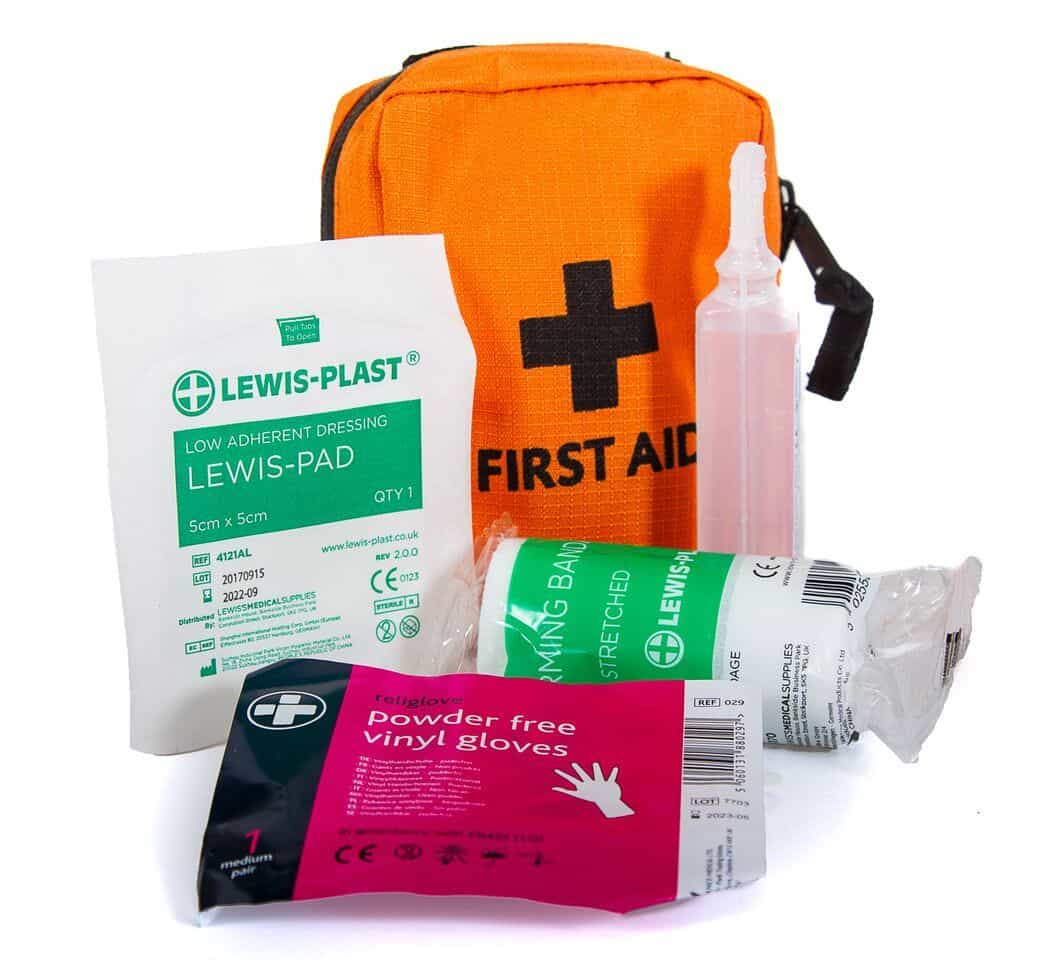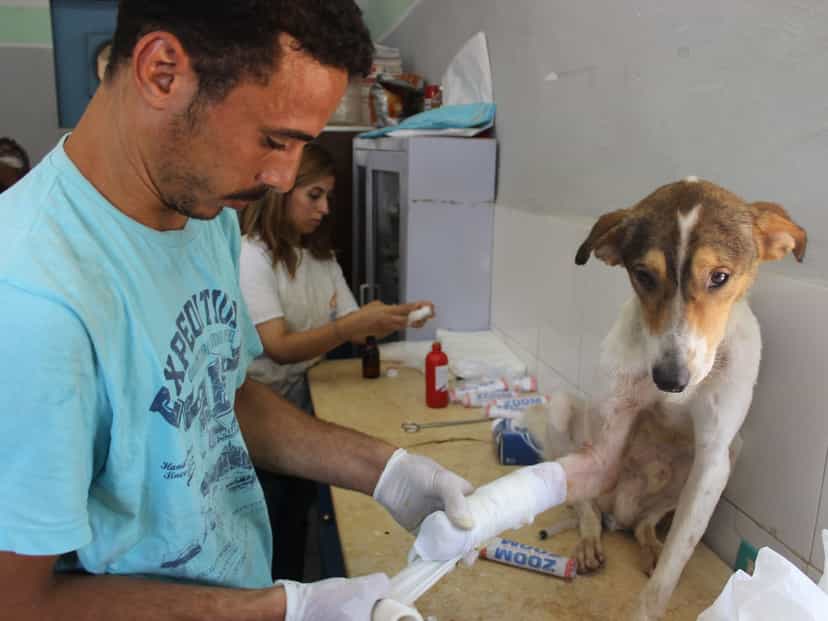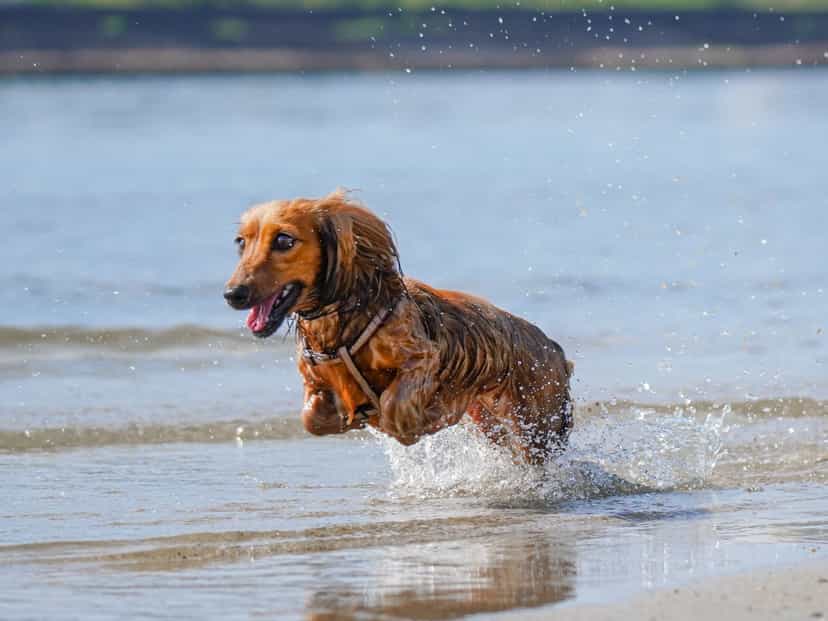
How do I do first aid on my dog? Can I do first aid on my dog? Do dogs need first aid?
It is commonplace now for new parents to learn paediatric first aid. They want to be prepared for any event where their actions could save their child’s life.
But what would you do if your dog was choking? Or had a seizure? Or needed life-saving CPR?
There was a story recently in the news where a dog had chased a squirrel into the road and was hit by a car. The owner described how her dog was covered in blood and had no heartbeat. As she did not know basic first aid, she thought she had lost her dog and she was preparing to take her home to bury her when a passer-by stopped and performed canine CPR, bringing her back to life. The dog made a full recovery; however, this would not have been the case had the passer-by not stopped or known canine CPR.
Thankfully, more and more of us are becoming aware of our dogs needs and taking a dog first aid course is a great way to make sure that you have the skills and confidence to act in an emergency.
"Sometimes people can injure their dogs further by not knowing what to do to help and panicking."

My Top 5 Reasons to Attend a Dog First Aid Course:
#1 Majority of accidents happen when the dog is with the owner
A lot of the time, people say to me “oh its okay, my dog walker knows dog first aid”
Majority of accidents happen when the dog is with the owner because that is who they spend the most time with. Accidents can and will happen at any time, but don’t leave it to your dog walker, trainer, or groomer – ensure YOU have the skills to help your dog when they need you the most.
My course is aimed at anyone who cares for dogs – whether that be an owner or a dog professional. The content is easy to follow and makes for a fun, interactive half day.
#2 Bridges the gap between the accident and getting your dog to the vet in the best possible condition.
Our vet team tell us that in most cases, when first aid has been performed, the outcome of the incident can be much more successful.
How we act in the first 5 minutes of an incident is incredibly important because it can mean the difference between life and death. If your dog was choking, you may not have time to get them into the transportation and to the vets. This was unfortunately the case with a lady I met at Crufts in 2019. Her Westie choked on a treat as she panicked and didn’t know how to help. By the time she arrived at the vets, the dog had passed away and the vets were unable to revive him.
I teach 4 different techniques to aid with choking on our courses. A lot of people will resort to abdominal thrusts in a panic, however this itself is dangerous as it can cause fatal internal injuries, which is why it is a last resort and I teach 3 other ways to help.

#3 The Freedom from Pain Injury and Disease
If you were to visit the Government website, you could download a Code of Practice booklet that describes in detail 5 freedoms a dog is entitled to by law.
These 5 freedoms make up the Animal Welfare Act 2006 that outlines the responsibility and duty of care an owner or carer must provide an animal in their care.
These are:
- for a suitable environment and place to live
- for a suitable diet
- to exhibit normal behaviour patterns
- to be housed with, or apart from, other animals (if applicable)
- to be protected from pain, injury, suffering and disease
As part of this act, my dog first course teaches you not only to act in an emergency, but also to recognise subtle signs and symptoms of illness promoting early diagnosis and treatment.
#4 Prevent More Damage
Sometimes people can injure their dogs further by not knowing what to do to help and panicking.
My course aims are to preserve life, to prevent further injury and to promote recovery. We can do this by following the four fundamental foundations:
- Visual risk assessment – Take a deep breath, keep calm, and ensure it is safe to approach
- Call for help / call vets – members of the public can assist, and it is important to ring ahead to the vet so that they can be prepared to receive the animal upon arrival.
- Secure dog (lead / muzzle) – to ensure the dog does not cause you injury while you assist
- Full body examination – to prioritise your first aid actions
#5 It’s an investment in your dog’s care
Our courses are reasonably priced between £55-£59.50 per person, but this is an investment in your dog’s care and the skills learned are invaluable if your dog was ever to have an accident.
The course is certified, and we recommend skills are renewed every 3 years which means the investment in the course itself costs only £18.33-£19.83 per year! Bargain!


